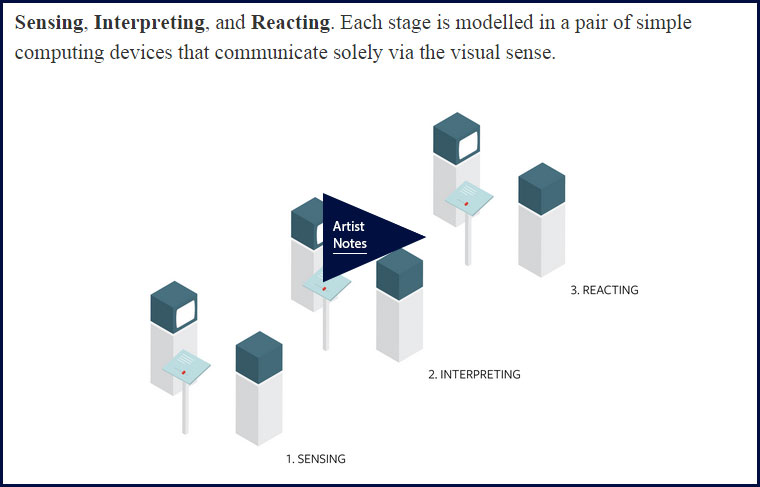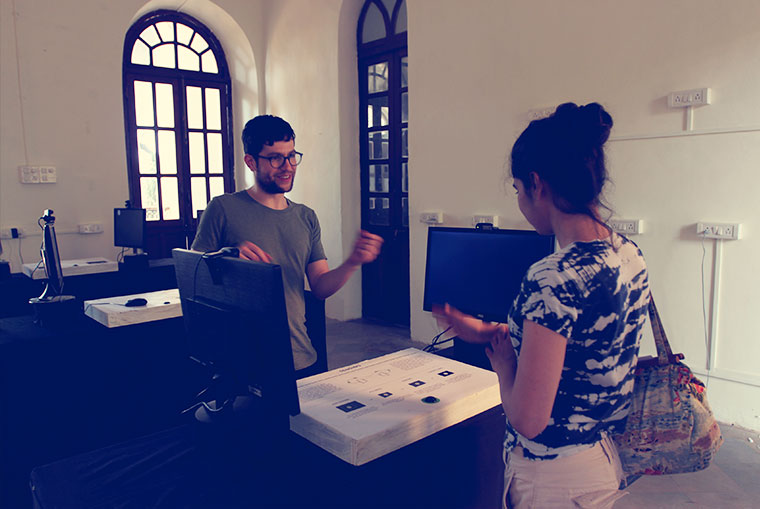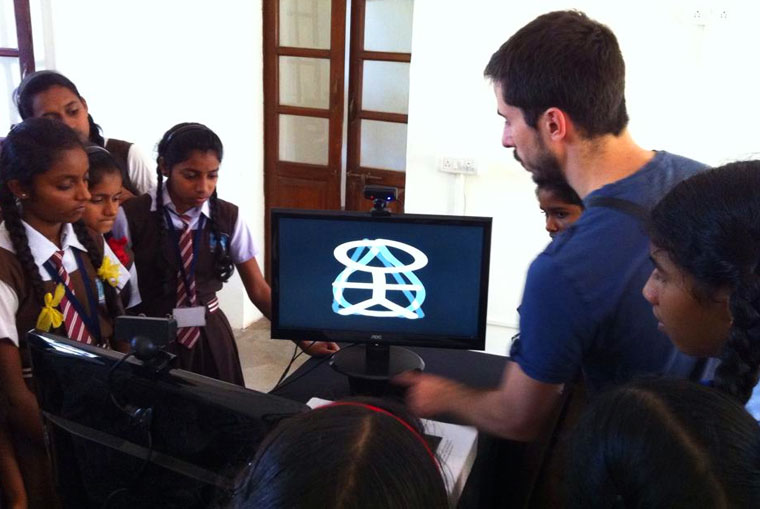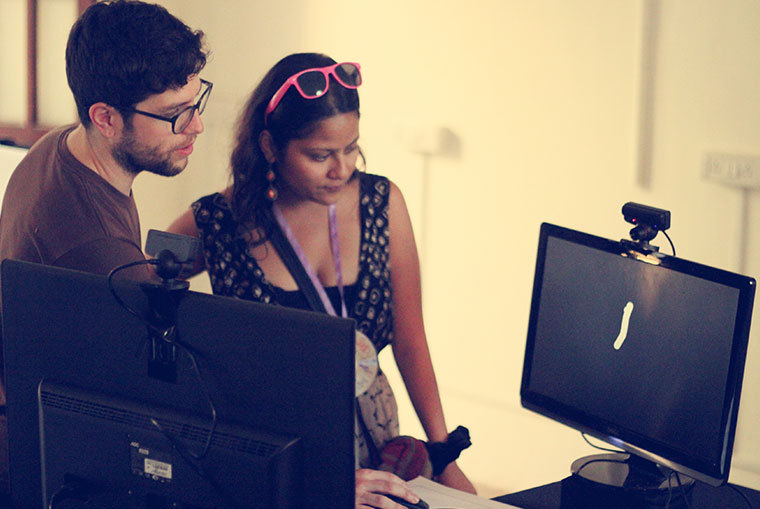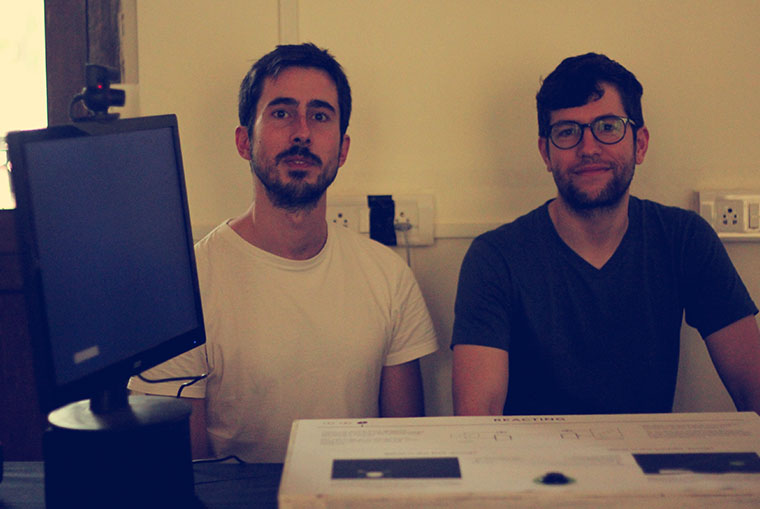Talking
ABOUT THE INSTALLATION
The process of visual perception is most often taken for granted — we use our eyes and brains to make sense of the world as naturally as we use our lungs to breathe. But behind the scenes, our bodies and minds are performing an intricate and complex series of tasks, taking in light as input, translating that input to meaning based on our physiology and experience, and making conscious or unconscious decisions about how to act on the received information.
Talking is an interactive installation that aims to open a window onto this fascinating process, allowing visitors to learn about and experiment with concepts of perception. We isolate three conceptual stages of the human perceptual process — Sensing, Interpreting, and Reacting — and model each stage in a pair of simple computing devices that communicate solely via the visual sense. At each of the three stations, audience members will view and interact with a simple conversation that illustrates one of the isolated stages.
ABOUT THE ARTIST
Ishac Bertran is a designer and artist from Barcelona, currently living in New York. His work revolves around the relationship between people and technology. As a designer, Ishac specializes in envisioning and prototyping future scenarios that often involve emerging technologies. Through art he investigates the aesthetics of nature, physics and computation. In the recent years he invented a tool for children to create stop-motion animation, experimented with combinations of digital and analog photography and published a poetry book written with code.
Contact: ishacbertran@gmail.com
Jonathan Wohl is an artist and programmer from Wisconsin, currently living in New York City. With a varied background in woodworking, music and sound design, and the natural sciences, his work has taken many forms, often combining familiar materials with new technologies. He has built musical instruments and gas-powered sculptures, collaborated with dancers and filmmakers, and created politically-themed video games. Jonathan is a founding member of The Notion Collective, a group of collaborating artists based in Brooklyn, NY, and is currently working with the Sustainable Engineering Lab at Columbia University.
Contact: jon@jonwohl.com
KNOW MORE
“… that’s why we have a brain, is to predict the future, to anticipate the consequences of our actions and inactions …” – Ray Kurzweil
What does it mean to “see?” Clearly it is more than simply light at work; a stone may receive the same light as our eye, but we do not say that the stone “sees”. To see implies not only the sensing of light, but the interpretation of that light into meaning, and ultimately the triggering of a reaction — in short, the act of seeing implies a conscious observer.
With the rapid advancement of computational power, basic yet powerful forms of intelligence are becoming commonplace — speech recognition and face detection systems are now built into inexpensive smart phones, for example. These systems are designed after our minds, sensing input and detecting patterns, making predictions based on the patterns they’ve deciphered, and acting on these predictions. As our understanding of our own brains’ “thinking mechanism” improves, so too will our ability to replicate its function in computers. And as our machines evolve to encompass a greater capacity for thinking, so too will our philosophical understanding of what it means to see, to be conscious.
Photo Credit : Tinka Kalajzic

